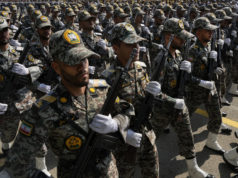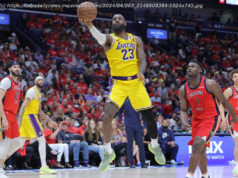Eight of the 10 top-paid football coaches and at least five of the 10 highest-paid men’s basketball coaches have not taken pay cuts, according to an ESPN survey.
NEARLY HALF OF major college football and men’s basketball coaches have taken voluntary pay cuts in response to the financial crisis facing higher education because of the coronavirus pandemic, but most of the highest-paid coaches have not, an ESPN survey found.
Eight of the 10 top-paid football coaches and at least five of the 10 highest-paid men’s basketball coaches — all of whom earn more money than anyone else at their schools — have not taken cuts.
Most of the schools that employ those coaches have not announced universitywide salary or job cuts, but they are all facing deep financial distress, accepting millions of dollars in taxpayer relief and, in most cases, implementing a range of cost-saving measures inside and outside athletics.
This story was reported and written by ESPN’s Kyle Bonagura, Steve Fainaru, Mark Fainaru-Wada, Michael Fletcher, Maya Jones, Paula Lavigne, Tonya Malinowski, John Mastroberardino, Dan Murphy, Mark Schlabach, Tisha Thompson and Tracy Wholf.
The list of those whose pay is unchanged includes the two highest-paid coaches in their respective sports: Clemson football coach Dabo Swinney, who earned $9.3 million in the 2019-20 season, and Kentucky basketball coach John Calipari, who earned $8.2 million. Others include, in football, Alabama’s Nick Saban ($8.9 million) and Texas A&M’s Jimbo Fisher ($7.5 million) and, in basketball, Tennessee’s Rick Barnes ($4.7 million) and Texas Tech’s Chris Beard ($4.4 million).
Two of the highest-paid coaches — Calipari and Texas football coach Tom Herman ($6.75 million) — have not taken cuts even as their universities announced reduced pay for other employees, furloughs or layoffs. A Texas spokesman said the school is considering options as it finalizes its budget.
ESPN contacted all 65 Power 5 schools, plus 10 other colleges with top-tier basketball programs, to determine the extent to which coaches are sharing in unprecedented financial burdens related to the pandemic.
At 33 of the 75 schools, at least one coach agreed to renegotiate a contract to accept a pay cut amid the pandemic, according to the survey. They include Michigan football coach Jim Harbaugh, who last month agreed to a one-year, 10% cut of his $7.5 million salary; Kansas basketball coach Bill Self ($4 million, 10% cut for six months); and Oklahoma football coach Lincoln Riley ($6.4 million, 10% cut for one year).
At 26 of the schools, those coaches have yet to see their pay reduced. Many work at public universities and are the highest-paid public employees in their states. A UCLA spokesperson said basketball coach Mick Cronin ($5.5 million) and football coach Chip Kelly ($3.5 million) have both indicated they would take pay cuts, but the department is awaiting guidance from the University of California president’s office.
Sixteen schools, most of them private, declined to respond to ESPN’s questions. Following publication of this story, a spokesperson for one of those schools, Texas Christian University, emailed ESPN to say that football coach Gary Patterson and basketball coach Jamie Dixon have taken a “voluntary indefinite” pay cut of 10%. He declined to say when the decision to take the cut was made.
Coaches’ pay figures for the 2019-20 season were compiled from USA Today rankings and may include salaries, income from contract provisions and deferred payments. Click here for the full ranking and methodology.*Source: 2018 revenue data from the Knight Commission on Intercollegiate Athletics.
Coaches’ pay figures for the 2019-20 season were compiled from USA Today rankings and may include salaries, income from contract provisions and deferred payments. Click here for the full ranking and methodology. *Source: 2018 revenue data from the Knight Commission on Intercollegiate Athletics.
The coaches work under contracts that typically would preclude salary cuts without their approval. At the schools where coaches haven’t taken cuts, it’s unclear whether they have been asked to do so by the university presidents, some of whom have themselves taken voluntary reductions.
Agent Jimmy Sexton represents a handful of coaches who have taken pay cuts, but at least a dozen who have not, including football coaches Saban, Fisher, Georgia’s Kirby Smart ($6.9 million), Auburn’s Gus Malzahn ($6.8 million) and Florida’s Dan Mullen ($6.1 million). Sexton declined to comment. None of the coaches who have not taken pay cuts responded to interview requests ESPN sent through their athletic departments.
One Sexton client, South Carolina’s Will Muschamp ($4.4 million), said giving up 10% of his pay for one year was “a very easy decision.” Muschamp said he and his wife had already decided he would offer up a pay cut when his athletic director, Ray Tanner, asked if he would consider it. The school is facing a $127 million shortfall and has announced a long list of cost-saving measures.
“Our state is going through a really difficult time; our university is going through a really difficult time,” Muschamp said. “I’ve been fortunate in my coaching career.”
Muschamp said he will not recoup the reduced salary with any type of back-end compensation, “and I’m fine with that. Best thing to do.” His 10 assistant coaches, who combined for more than $5.6 million in 2019 salary, aren’t taking pay cuts, but they are part of schoolwide furloughs.
Even before the pandemic, the issue of skyrocketing salaries for coaches whose success is measured by the performance of unpaid athletes had attracted scrutiny from player advocates, economists and Congress.
The coaches preside over programs that bring in millions of dollars and nationwide recognition for their universities. Still, none of the programs can exist outside the schools’ infrastructure, and only slightly more than half of the public Power 5 athletic departments can pay for themselves without support from student fees or the university’s general fund, now under unprecedented strain almost everywhere.
“Clearly, even if the schools don’t decide that they are going to reduce the coaches’ salaries, as they did to the teachers and to the students’ classes, the coaches can decide to do it themselves,” said Steve Ellis, the president of Taxpayers for Common Sense, a nonpartisan watchdog. “A lot of Americans are hurting right now because they can’t work because their job is closed…. And so it’s a really difficult time. And so that’s really where it comes back to these coaches. Are they in this with us?”
At the University of Arizona, football coach Kevin Sumlin ($2 million) and men’s basketball coach Sean Miller ($3.2 million) accepted 20% pay cuts this year — believed to be among the highest in the country.
“Everyone realized what they needed to do to help our department and university and really to do the right thing,” said Arizona athletic director Dave Heeke, who also took a 20% cut.
Among Power 5 schools, Arizona is one of the most reliant on direct institutional support from the university to fund athletics, with 9.
Home
United States
USA — Sport Some, not all, coaches share colleges' burden amid coronavirus pandemic






